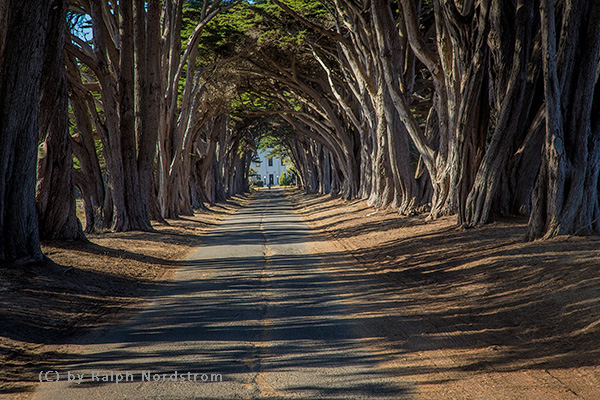I was talking with a friend the other day in Joshua Tree about the differences between shooting landscape photography from a tripod versus hand-held. He had been faithfully photographing from a tripod but did some shooting hand-held, apparently for the first time, and was excited with the sense of freedom he experienced. We had a brief conversation on the advantages and disadvantages of both methods. I’d like to share the conversation with you.

Sharpness
The primary reason for shooting from a tripod is to get the sharpest possible image. In fact, some have compared the tripod to the original image stabilization technology, long before it was being incorporated into lenses and camera bodies. When shooting on a tripod, if you need a 10 second exposure because you’re shooting in low light it doesn’t matter. Your camera will be stable during the entire exposure. You’re free to use a smaller aperture to get the depth of field you need or take advantage of your lens’ sharpness ‘sweet spot’, usually 2 or 3 stops above wide-open.
When shooting hand-held, you are never guaranteed that there won’t be any camera movement during the exposure but you can minimize the risk by taking the following steps. First, follow the ‘reciprocal focal length’ rule; that is, make sure your shutter speed is 1 dividend by the focal length or faster. So if your focal length is 100 mm, then be sure your shutter speed is 1/100 sec. or faster. Secondly, stabilize your body by resting your left elbow against your chest. You are essentially turning your body into a tripod. Thirdly, use image stabilization in your lens or camera body if it’s available. Often, image stabilization will give you a two stop advantage. In other words, say you’re shooting with a 400 mm lens. Without image stabilization you will need a shutter speed of 1/400 sec. or faster. With a 1 stop image stabilization advantage you can shoot with a 1/200 sec. shutter speed and with a 2 stop advantage you can shot at 1/100 sec.
Spontaneity
There’s no question that shooting hand-held is far more spontaneous than shooting from a tripod. There are situations where the spontaneity of hand-held is a great advantage. When I take a group to Devil’s Garden in Utah’s Grand Staircase Escalante I recommend they shoot hand-held because there’s so much to photograph there, so many weird formations clamoring for attention.
But there are other situations that benefit from a more deliberate approach, situations that require thought and just slowing down enough to get a sense of place and connecting with the scene before you. And in these situations, a tripod facilitates this far better than shooting hand-held. With a tripod you have to slow down.
Of course, this discussion is in the context of landscape and seascape photography. If you were doing street or travel photography, for instance, shooting hand-held is the only way to go.
Composition
Then there’s the matter of composition. I don’t know about you, but I’m very meticulous about my compositions. I obsess over border patrol, deciding what’s in the frame and what’s not. Is it OK to include part of that bush, none of it or all of it. If part of it, how much?
One of the things with composition when hand-held, when you’re looking at the left edge of the frame to get it just right, there’s a good chance that the camera will move when you shift your eye to the right edge. And what you carefully aligned on the left is now off. The same goes for top and bottom edges. It’s easy to inadvertently end up with amputated elements on the edges. And it’s because it’s hard not to shift the camera by the tiniest amount when your eye moves from one edge of the frame to the other,
On a tripod, this is not a problem. The camera won’t move and you can more easily set up a very tricky and precise composition. You can also use live view when on a tripod to check and even create your compositions when on a tripod. However, once I have the composition I like in live view, I still double-check it in the viewfinder, just to make sure.
You can compensate for the composition problem when shooting hand-held by zooming out a littler to make sure you’re not amputating any edge elements unintentionally. Then, in the digital darkroom, you can crop the image to the size you had envisioned,
Summary
My personal preference is to shoot most of my landscape and seascape shots from a tripod. For me, slowing down is an important part of the process of capturing what I’m feeling. Even on a tripod, it’s possible to get a blurry image from camera shake. When I’m shooting with my 100-400 lens, I have to be careful of such things as the vibration caused by mirror flap or, worse yet, by wind. So I either shoot from live view (now that I have a camera that will focus in live view) or with mirror lockup. I also use a 2 second delay for my normal lenses and a 10 second delay for the 100-400. And, if there’s any kind of breeze I’ll wait for a lull and then get the shot, being sure to hold the camera strap so it doesn’t blow in the wind.
But for those circumstances where spontaneity is important, I too enjoy the freedom of shooting hand-held.
Join us on a rewarding photographic experience in some of nature’s most beautiful places. For more information, click here.
(287)
